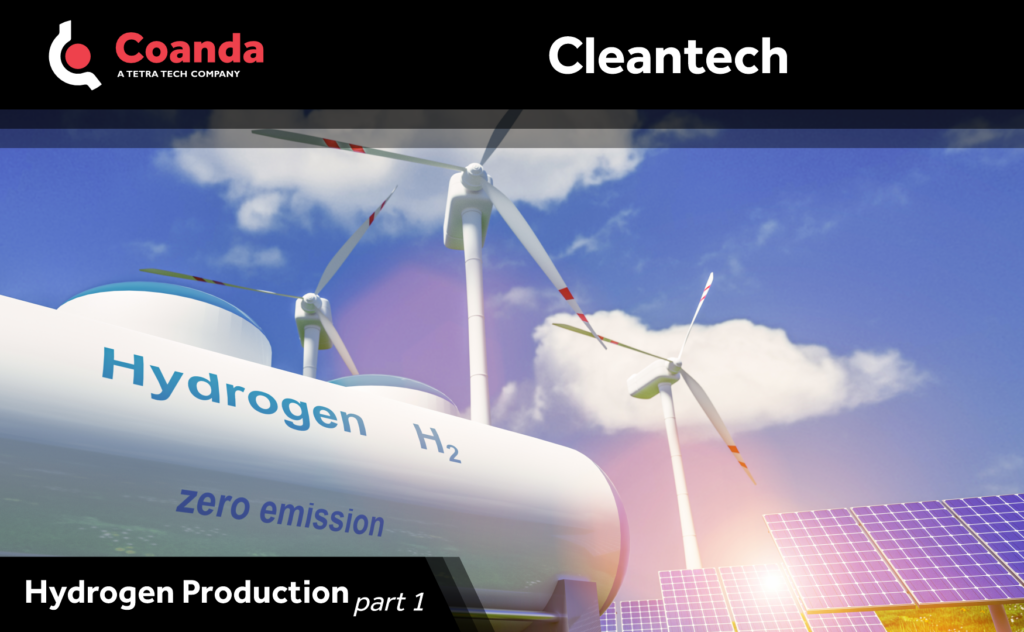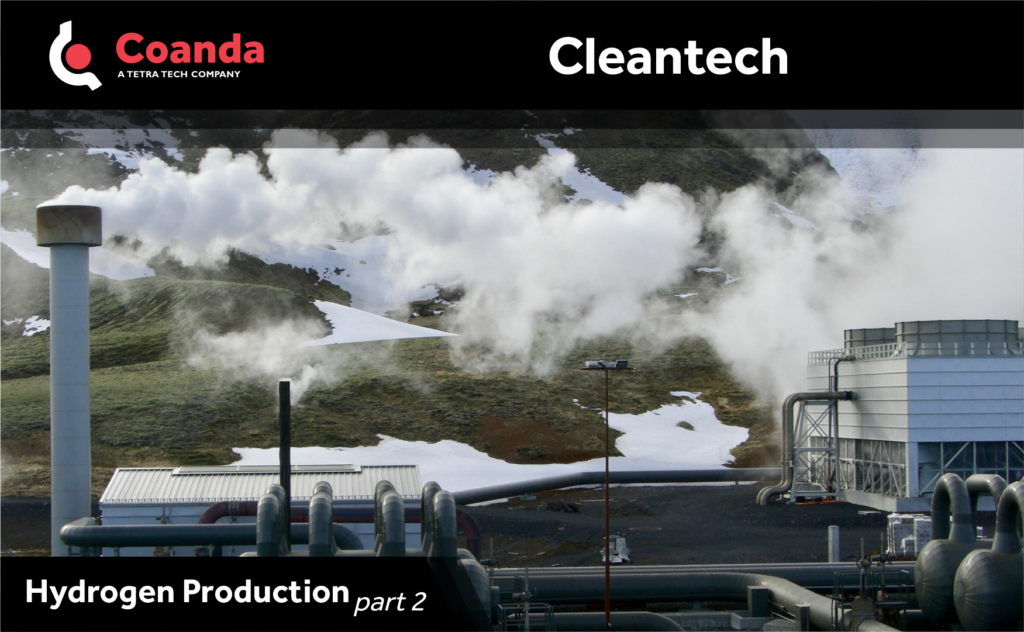Hydrogen Production
Posted on December 14, 2023 Cleantech
This post was originally posted in two parts, which are combined below.
Part 1
In previous posts, we have discussed various strategies for producing cleaner energy. These have primarily focused on avoiding fuel combustion for electrical power generation, as most combustion reactions produce carbon dioxide. While the future of transportation may be electric, battery production is currently insufficient to meet all transportation needs. Thus, the transportation sector will likely continue to rely on portable, high-energy density, combustible fuels in the coming decades.
There are, however, fuels that do not release carbon dioxide as a product of combustion. Chief among these is hydrogen. Molecular hydrogen (H2) burns in air or can be used to power a hydrogen fuel cell, producing mostly water vapour, and, typically, smaller quantities of nitrogen oxides.
While hydrogen is the most abundant element in the universe, making up approximately three quarters of all matter, it is relatively scarce on Earth, where most of it is bound in water and organic chemicals. Thus, although H2 combustion or use in a fuel cell produces no carbon dioxide greenhouse gas, it must be produced from water or organic matter. Many processes exist for producing H2
from a variety of raw materials, and while the final product is the same, each requires energy input and produces waste. The feedstock and production process greatly impacts the amount of CO2 released into the atmosphere.
In our next post we will explore some of the commonly employed hydrogen production methods.

Part 2
As outlined in our previous post, while hydrogen combustion or use in a fuel cell produces no carbon dioxide greenhouse gas, it must be produced from water or organic matter. There are a variety of ways to produce hydrogen, each with its own byproducts and energy use profile.
These different methods are conventionally classified by colour to provide an approximate ranking of their environmental impact, they do not in fact describe the physical colour of the hydrogen they produce:
Green hydrogen is produced by electrolysis of water, using electricity from renewable resources, such as wind or solar. No carbon dioxide is released at any point in this process.
White: hydrogen produced as a byproduct or waste product of other processes, or found naturally occurring. While the hydrogen itself is “free,” the remaining process or extraction (in the case of naturally occurring H2) may release CO2.
Yellow: like green hydrogen, yellow hydrogen is produced by electrolysis of water, but using electricity from the grid, which varies greatly in terms of environmental impact, depending on how it is produced.
Purple hydrogen is also produced by electrolysis, using electricity generated with nuclear power. While the CO2 emissions are minimal, there are many other environmental and health concerns regarding nuclear energy, as described in a previous post.
Turquoise hydrogen is produced by thermal cracking of methane (CH4), which produces solid carbon instead of CO2. However, the heat source is typically a carbon fuel.
Blue: this is hydrogen produced from natural gas by steam-reforming of methane to produce syngas (hydrogen + carbon monoxide). The carbon monoxide (CO) produced is captured and stored or used. It is not clear whether the CO2
produced by the steam heat source is also captured.
Grey hydrogen is also sourced from fossil fuel by methane steam-reforming. None of the CO or CO2 produced is captured.
Black hydrogen is separated from syngas produced by coal gasification without any carbon capture.
In future posts, we will examine the environmental impacts of each of these in more detail.



